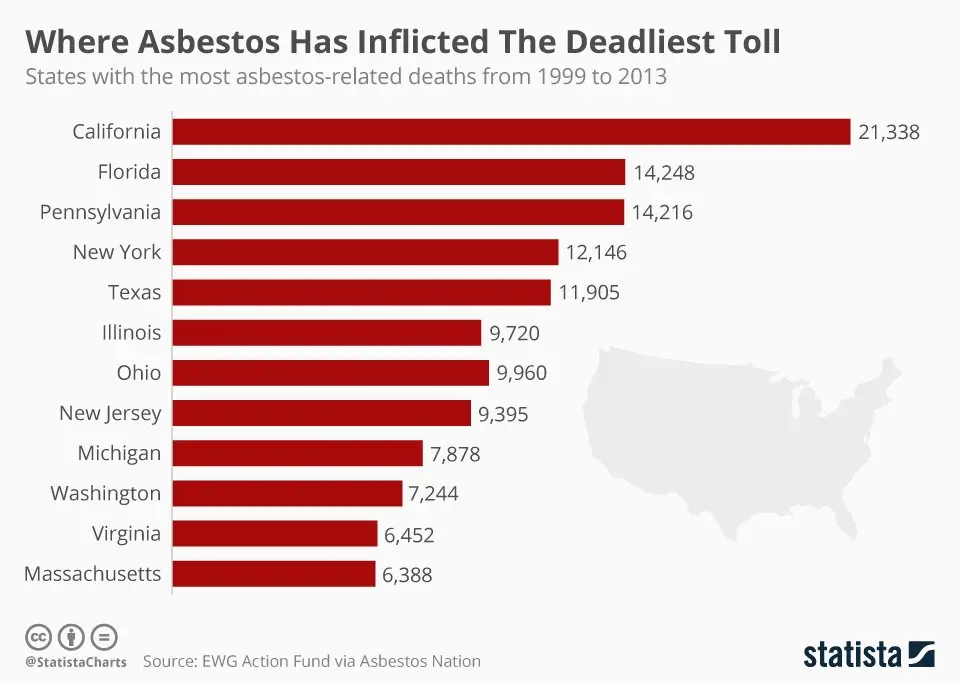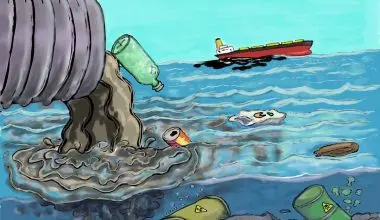Table of Contents Show
What is Asbestos?
Asbestos is a generic name for a group of fibrous silicate materials. The world ‘asbestos’ derived from Greek means “inextinguishable, inconsumable, or unquenchable”. Asbestos is used for its very high tensile strength, insulation ability, and its ability to keep safe from chemical erosion.
Asbestos has a wide variety of uses, hence it is also named as the “magic mineral”. However, the issue with Asbestos is that it has led to various health-related diseases culminating in the death of many workers mining or handling this material.
Due to this reason, asbestos has been banned around the world after many legal proceedings and complaints by the community.
However, in some parts of the world, asbestos is still being used and is extensively mined by countries such as China, Russia and India. Although, US has stopped mining asbestos and the use has decreased significantly, but use of Asbestos is still legally allowed due to multiple reasons that we will discuss below.
Here we will look at some of the uses of asbestos and why it got banned in the world.
Uses of Asbestos
Asbestos, due to it having a unique chemical composition and physical properties, made it an ideal material for usage in thousands of products. These include the making of road signs, floor tiles, and even sewage pipes. Asbestos materials are also used for the insulation of buildings and roofing of housing.
Historical records suggest that we have been using asbestos for 4000 years. In this century alone we have used it in over 3,000 products; boilers and pipework are lagged with asbestos in power stations, hospitals, and throughout the heavy industry.
It was popularly used by the shipbuilding and railway industry as well. Other uses of asbestos include friction materials for vehicle brakes, lifts, machinery, clutches, and gas masks.
Listing out 15 uses of Asbestos just for your ease below:
- Road signs
- Floor tiles
- Sewage pipes
- Insulation of buildings
- Roofing of houses
- Vehicle brakes
- Lifts
- Machinery
- Clutches
- Gas Masks
- Power stations (especially boilers)
- Hospitals (especially pipelines)
- Heavy Industry
- Shipbuilding
- Railway Industry
Why did Asbestos get banned worldwide? Effects of Asbestos
While reading the previous paragraph, you might have been surprised by the massive number of industries that were using it, and it made you wonder why it got banned. The reason is due to the various harmful effects that are caused by asbestos.
Asbestos has been associated as a risk factor for various lung diseases. Asbestos can be inhaled by the people, and once inhaled; it can cause various lung diseases, including fibrosis of the lungs (Asbestosis). It causes irritation and dyspnea in the chest cavity.
Furthermore, the long-standing complication of asbestos exposure is mesothelioma, a type of cancer affecting the lining of the chest cavity. All these issues lead to respiratory distress and loss of normal respiratory function, enlargement of the heart, and eventually death.
According to the World Health Organization (WHO), 125 million people across the planet are exposed to asbestos in one way or another.
The people that are most susceptible to exposure of asbestos are those that are responsible for the mining and processing of asbestos along with those that use asbestos in the construction of buildings, roofing experts, cement workers, and the people living and working near asbestos materials. The International Labor Association says more than 107,000 workers die each year due to asbestos-related diseases.
Due to these reasons, countries decided to ban asbestos.
Iceland was the first one which took the initiative against asbestos, effectively banning it in 1983. Soon there were more countries to follow.
Currently, 60 countries have banned asbestos including all members of the European Union. It is under the category of controlled waste under Annex I of the Basel Convention on the control of transboundary movements of hazardous wastes and their disposal (1992). This meant that all countries under the agreement are required to prohibit the import and export of asbestos between them.
However, still many countries around the world continue to use it which also includes The United States, India, China, Russia, and Kazakhstan with China being the largest consumer among them all. Russia is the largest exporter of asbestos with its shipping of 618,037 metric tons of asbestos worldwide in 2013.
Why is Asbestos not Banned in the United States?

States in the US with the most asbestos-related deaths from 1999 to 2013, charted by Statista.
At first, the Environmental Protection Agency (EPA) recognized asbestos as a hazardous pollutant in 1971, but only banned specific uses of asbestos in 1973. However, further asbestos-related products in the United States were banned in 1989. This, however, got overturned in the Fifth Circuit Court of Appeals in 1991.
Since then, asbestos is being used widely around the country and billions of dollars are being paid due to asbestos litigation. Even then, there are various asbestos-related laws and regulations passed by the EPA which all of us have to abide by.
Other agencies in the United States enforcing asbestos regulations include the Occupational and Safety and Health Administration (OSHA), Consumer Product Safety Commission (CPSC), Mine Safety and Health Administration (MSHA).
Asbestos-Related Laws and Regulations put in place by EPA
EPA Rules and regulations have been put in place to avoid, or at the very least, minimize the exposure of asbestos to the environment and the people handling it.
The Asbestos Hazard Emergency Response Act (AHERA) (Toxic Substances Control Act (TSCA) Title II):
This law required educations agencies of local districts to inspect schools for any asbestos-containing material, prepare asbestos management plans and also take responsive actions to reduce and prevent asbestos hazards in school districts.
Asbestos Information Act:
This law urges factories to provide transparency and also the identification of businesses making certain type of asbestos materials containing products.
Asbestos School Hazard Abatement Reauthorization Act (ASHARA):
Extended funding to asbestos abatement loans and grant programs for the school was given under this law. It directed EPA to increase training hours required for training discipline under Asbestos Model Accreditation Plan.
EPA Asbestos regulations:
Restrictions on discontinued uses of asbestos rule:
This rule strengthened the ability of the agency to review lists of asbestos products previously not available in the market before they could be sold in the United States.
Persons subjected to this rule need to inform the EPA, 90 days in advance before manufacturing, importing, and processing asbestos or asbestos-containing products. This rule was promoted further recently in April 2019 as discussed below.
EPA Asbestos Worker Protection Rule:
Through the authority of Section 6 of the Toxic Substances Control Act (TSCA), the EPA extended worker protection requirements to local and state government employees involved in asbestos work who were not previously covered by the Occupational Safety and Health Administration’s (OSHA) asbestos regulations.
Asbestos National Emission Standards for Hazardous Air Pollutants (NESHAP):
NESHAP regulations specify work practice regarding asbestos to be implemented during the renovation and demolition of structures, installations, and buildings. The owner of the building must notify the designated state agency before any demolition or renovation of the building that may contain a certain threshold amount of asbestos and asbestos-containing material.
Other than that, NESHAP also sheds light on the law regarding proper waste disposal of asbestos-related materials. NESHAP requires the asbestos containing materials (especially if wet) to be sealed in an air-tight container, labeled adequately, as well as transported and disposed properly to landfills qualified to handle asbestos-related waste products.
Both, the transport companies as well as landfills have to fulfill requirements to be able to handle asbestos waste.
April 2019 Final Rule regarding Asbestos
In April 2019, EPA issued a final rule that strengthens the Agency’s ability to rigorously review an expansive list of asbestos products that are no longer on the market before they could be sold again in the United States. This action gives EPA the authority to prohibit the use of these products or put in place restrictions to protect public health.






